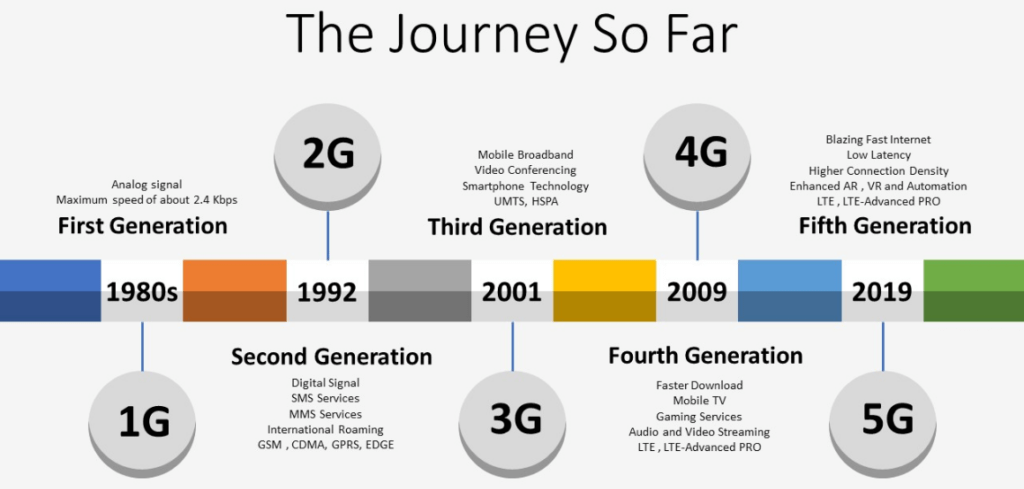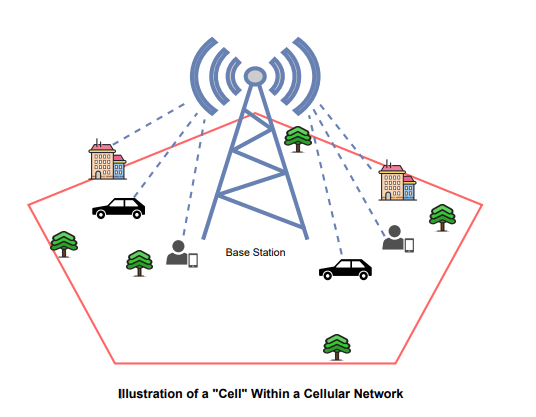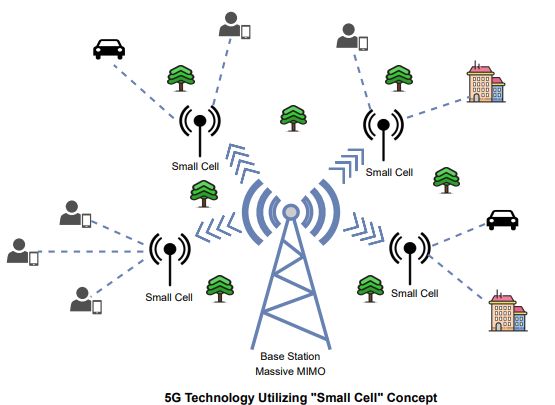5G Technology is the fifth generation global standard for mobile telecommunications. It is a successor to the 4g cellular networks aimed at changing our lives in a major way by providing cellular services at blazing speed, almost no network interruption and
extremely low lag.
Before we delve into this topic, we need to first understand the terms ITU-R and 3GPP.
ITU stands for International Telecommunication Union a specialized agency under The United Nations responsible for management of technologies related to Information and Communication. It has many sectors within it. Among that ITU-R is one of the sectors that manages the spectrum related to the international radio frequency and the satellite orbits for communication.
3GPP is a consortium of organizations from various countries that works on the standards or requirements for cellular technology laid by ITU-R and develops the protocols accordingly.
Before the advent of 3G, the organizations and agencies in various countries were engaged in developing competing technologies for the mobile network. But later a need was felt to form a consortium to standardize and jointly develop the technologies. As a result 3GPP was formed with organizational partners from 7 countries. There are few other consortiums too, but 3GPP is the prominent one among all. The role of ITU-R is to release specifications and recommendations for a specific generation of mobile technology in the form of International Mobile Telecommunications (IMT) vision. The role of 3GPP is to evaluate these specifications and develop the systems as per the standards. Take for instance, before the release of 3G, ITU-R released the specifications in the form of IMT-2000 vision. 3GPP worked on the specifications for 3G and developed the systems like UMTS and HSPA.
We are familiar with the names like 1G, 2G, 3G, 4G and 5G. These terms are basically the marketing names for various generations of Mobile Telecommunication technology. The letter “G” denotes the word “Generation” and the number is analogous to the version of mobile telecommunication technology.

1G or The First Generation – It was launched in the 1980s. However, upon its release, it was just called as Wireless Communication Technology. It was only after the release of 2G, the prior technology started to be referred as 1G. The First Generation was full analog mode of communication. It gave people the option to use their phones while being outdoors or while travelling in their cars.
Interesting Fact : The era before 1G was regarded as “0G” or Zero Generation phase. In this era, radio telephones were used in cars. Much of this technology was developed post the Second Word War. The technology used during this period is considered to be the predecessors of modern-day cellular networks.
2G or The Second Generation – It was launched in the 1991. Calls were digitally encrypted. SMS, MMS and Email services were introduced.
3G or The Third Generation – It was released in the year 2001 as part of ITU-R’s vision IMT-2000. With speeds 4 times faster than that of 2G technology, subscribers could avail services like mobile broadband, audio and video streaming and web browsing.
4G or The Fourth Generation – It was released in 2009. The Fourth Generation enabled true mobile broadband based on IP protocols (LTE). Subscribers could avail services like mobile TV , video conferencing and faster downloads.
5G or The Fifth Generation – It was launched in 2019. The Fifth Generation is aimed at providing super fast internet, reliable low lag communication, highly available remote systems and never before Augmented Reality (AR) / Virtual Reality (VR) experience.
The journey so far in the field of mobile telecommunications has been revolutionary. With the introduction of 4G, faster more reliable broadband services became possible. But 5G promises much more than that.
Let us see how 5G technology is set to change our lives.
1. Blazing Fast Download
5G is claimed to have speed 20X times faster than 4G. With such speed, the consumers can look at downloading and uploading huge amounts of data in a flash.
2. Unique AR and VR experience
Many avenues are expected to open in the field of Augmented Reality (AR) and Virtual Reality (VR) courtesy 5G technology. From virtual shopping in a market like a shopper to viewing matches in a stadium like a spectator, all such options are expected to become reality.
Interesting Fact : A South Korean mobile service provider has already launched an app AR Live which uses 5G technology to give the subscribers the experience to dance virtually along side their favorite celebrity idol.
3. Seamless Automation
Low latency , high speed and increased bandwidth capacity will enable large scale automation in almost every field. The industries can benefit from 5G by automating inspection and diagnosis of problems, increasing the output efficiency by introducing robotic controls and streamlining production through real time tracking of goods and materials. Likewise healthcare sector can utilize 5G to enable robotic surgeries, telemedicine and consultation, faster transfer of scan reports etc. Defence sector can benefit from 5G by having more innovative approaches in operating the UAVs and drones for critical missions.
4. Next-Gen V2X Technology
The world has already got a glimpse of connected cars that enables the users to remotely control their vehicles, set up a geo fencing for navigation routes, get maintenance alerts, send SOS in emergencies and do a host of other things. V2X which stands for “Vehicle To Everything” will be a massive enhancement to connected cars concept where vehicles will leverage 5G to communicate with other vehicles , pedestrians, infrastructure and cloud. This will ensure safe driving, real time information about vehicle condition, tracking the whereabouts of vehicle while being on the move, getting updates on traffic etc. Driverless cars will be more common.
Mobile Telecommunications Technology follows the basic principle of making two remote devices communicate with each other using radio transmissions. These transmissions are done through a network of cells and hence it is called as Cellular Network. The term “cell” refers to a geographic or a signal area comprising of a base station which acts a hub for transmitting and receiving radio signals within that area.

5G Technology utilizes a new set of components within the cellular network which work in tandem for transmitting and receiving of signals.
1. Small Cells
These are kind of small or mini base stations placed few hundred feet apart to enable larger bandwidth capacity and reduced signal drops.
2. Millimeter Waves
Traditionally Millimeter Waves have been used for satellite and radar communications. For the first time, Millimeter Waves will be used for mobile telecommunication as part of 5G services. These waves are generally broadcast at higher frequencies. The limitation of Millimeter Waves is that it cannot travel through obstacles like buildings, trees, walls etc. To get around this problem and augment the signal, multiple small cells will be used.
3. Massive MIMO
MIMO stands for Multiple Input and Multiple Output which means deployment of multiple antennas for transmitting and receiving of signal. Massive MIMO is an enhancement of this concept where an extremely large number of antennas will be deployed in the Base Station that will focus on transmission gain within a small region.
4. Beamforming
Beamforming is kind of a system intended to deliver signal to the subscriber in an efficient way by reducing any kind of interferance or disturbance. This system will work with Massive MIMO by utilizing complex algorithms and coordinated methods to identify the best transmission route for data delivery to the user.

Many telecom operators have already started the rollout of 5G services on a commercial basis. In coming days this technology will further evolve and additional features will be introduced . Many mobile phone companies have been working to bring out new generation of handsets compatible with 5G technology.
With all the hype surrounding 5G, it is also important to note that there is a large debate raging across many countries on the harmful effects of this new technology on the environment. Scientists, Engineers and Environmentalists are divided on the risks posed by 5G. There is no denying that 5G technology has a lot of potential which agencies, companies and industries all over the world are eager to harness and usher an era of opportunities. However a lot more research is also needed to ensure that this technology is safe for everyone. We definitely have accomplished a lot in the field of mobile telecommunications but we still have a long way to go before mankind realizes the full potential of 5G.
